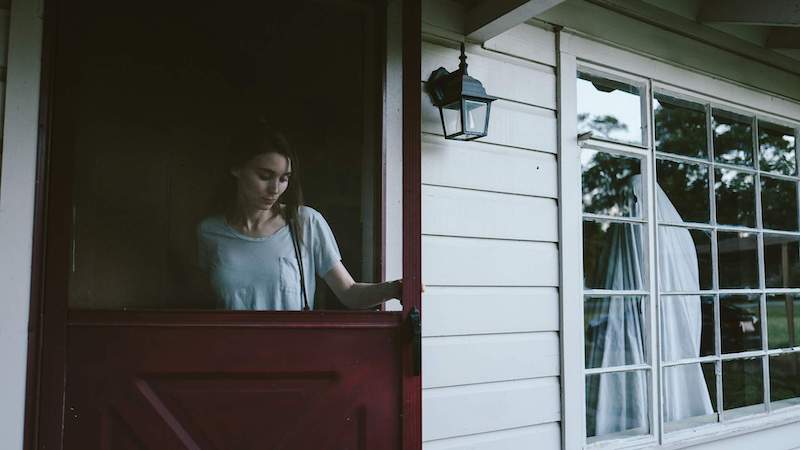In his spectacular and original picture A Ghost Story, filmmaker David Lowery illustrates what happens to those who are unable to let go. Apparently Lowery had always wanted to make a movie about ghosts—yet instead of falling back on the stereotypical ghost as the terrifying and unpalpable “other,” he subverts the genre by having the ghost as his protagonist and prompting the viewer to empathize with the departed character.
Shortly after her partner dies in a car accident, a woman, referred to as M, is haunted by his specter. Only instead of being frightening, this haunting is heart-wrenching. The specter, known as C, watches M as she goes through the grieving process … and eventually moves on. He is so attached to his past life with M, and to their home, that he stays put even after she moves away. While he does experience outbursts that frighten M—and the subsequent family that moves into their house—there is no doubt that his actions are rooted in deep suffering and frustration, rather than an attempt to hurt others.

Throughout the film we get scattered glimpses into the couple’s previous life together. They are generally loving and content, aside from a reoccurring argument that weighs heavily on their relationship: M would like to move away, while C is very attached to the house and refuses to leave. Even before he dies, C represents the crippling effects of not being able to let go—because his attachment to his home, to the way things are, creates friction between the otherwise happy couple.
In his afterlife, C is completely alone. For a brief moment, when he notices another ghost lurking in an adjacent house, it seems he may have found companionship. But the moment is short lived, because the other ghost—with its big, somber, pleading holes for eyes—is a mirror image of our protagonist, and only serves to intensify the sense of isolation. The other ghost tells our ghost “I’m waiting for someone.” When he is asked who, the specter stares on, desperately, in the face of nothingness. “I can’t remember” comes the hollow reply.
In this film, it is not the living that are left behind, but the departed who bear witness to everything that comes alive and dies. C watches as his home is torn down, as the countryside becomes a city, and as the centuries repeat themselves. While our protagonist craves permanence and stability, the universe does not provide. Stuck in what is a very literal depiction of samsara, the ghost’s presence is never known, and his expectant look is never returned. What will it take for him to let go and find peace?

